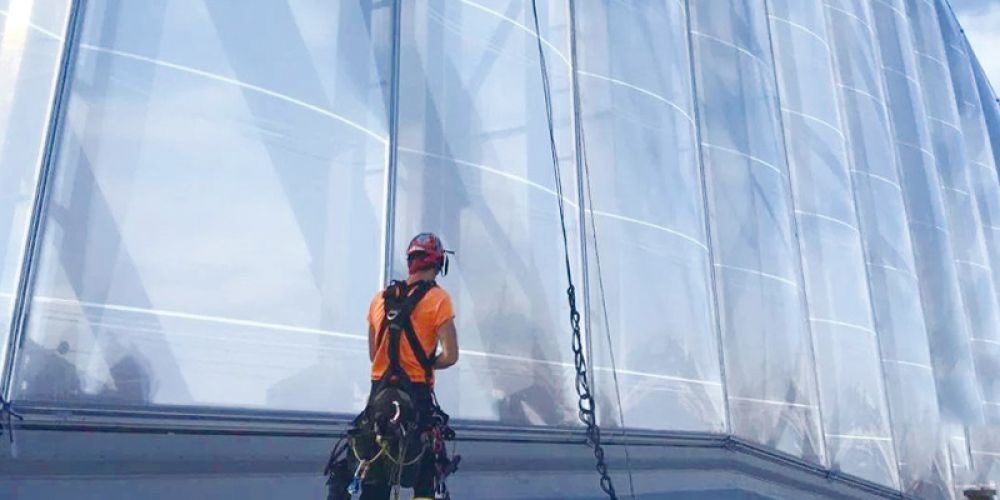
Membrane material processing: First, cut the membrane material according to the drawing, and then heat-seal and weld the cut pieces to form a single piece of membrane material with a curved surface. After the membrane material with a curved surface is formed, the membrane material is heat-sealed as a whole and the edges are closed according to the design requirements of the air pillow.
Installation process: After the processed air pillow is hoisted to the installation location, the uninflated air pillow is unfolded and slightly stretched to fix the air pillow on the edge of the fixture. After each piece of ETFE air pillow is installed, the inflation hose must be installed and air is supplied. At the same time, the air supply mechanical system, monitoring and control system, etc. are installed and tested to ensure that the entire system can operate effectively before inflation can be carried out. Monitor the structural status at any time and make adjustments according to the specific situation. The internal pressure of the air pillow after inflation should meet the design requirements.
Precision control: The air pillow membrane structure is sensitive to the accuracy and positioning of the installation. When the actual installation deviates from the design, it may cause uneven force on the air pillow or even fail to install. Therefore, the main structure is usually measured and positioned before the membrane structure is processed, and the construction accuracy is guaranteed during the membrane structure processing and installation process.
Wrinkle treatment: The wrinkle problem of ETFE membrane material can easily cause uneven stress of the membrane material, which has a certain impact on the stress performance of the membrane material. During the construction process, attention should be paid to the protection of the ETFE membrane material to avoid direct folding to produce wrinkles. When the ETFE membrane material produces wrinkles, local heating can be used to eliminate the wrinkles.